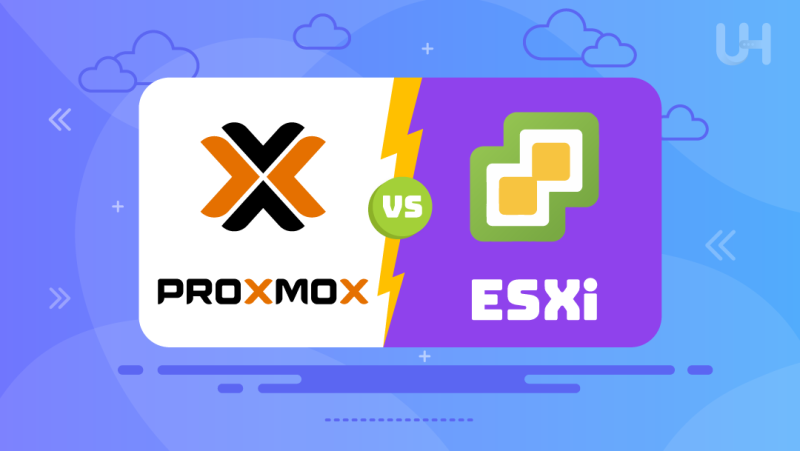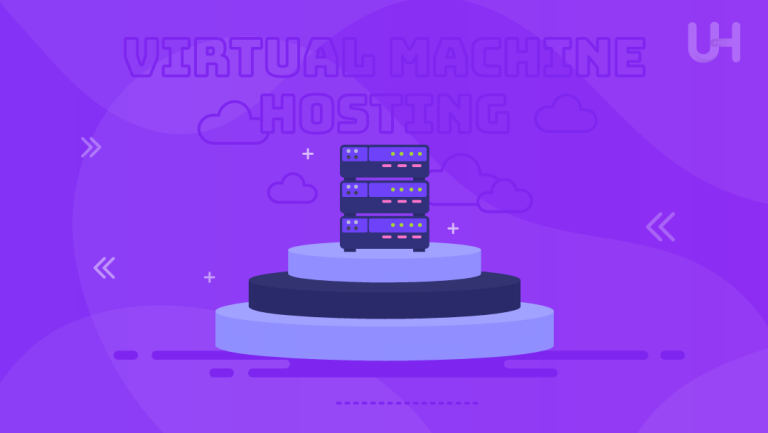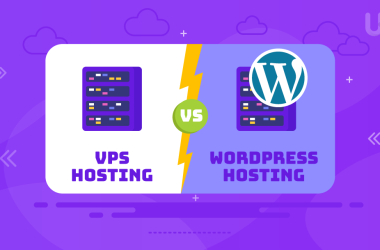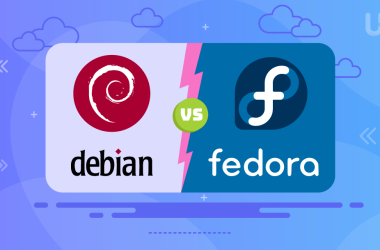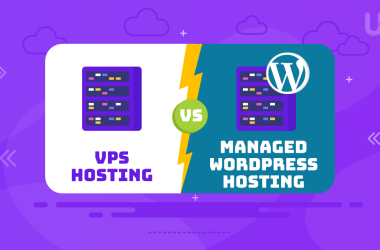The choice of hypervisor is critical when it comes to virtualization. It’s a point that would greatly impact your IT infrastructure, either in efficiency or effectiveness. The fight between IT professionals usually comes when one is looking at a solution for Proxmox vs ESXi.
Each hypervisor has weaknesses and strengths, depending on certain preferences and other requirements. In this article, we will cover the key features and some clean differences between Proxmox and ESXi.
What is Proxmox?
Proxmox Virtual Environment is an open-source complete virtualization management solution for servers. It delivers simple workloads to increase server virtualization management tasks and covers virtual machines, containers, and storage in a simple Web-based interface. This includes KVM full virtualization via Kernel-based Virtual Machine (KVM) and KVM for container-based virtualization with Linux Containers (LXC). This makes Proxmox VE flexible, efficient, and agile.
Key features of Proxmox
- Free and Open-Source: Proxmox is free of charge and open-source, allowing editing source code and linkages with other tools.
- Web-Based Management: An intuitive web-based interface simplifies the management and monitoring of the device.
- High Availability and Clustering: Clustering and high availability on Proxmox are supportive setups that ensure the least downtime happens.
- Complete Backup Solution: This solution comes with built-in options for backup and restoration, ensuring comprehensive data protection.
- Support for Many Types of Storage: Can cooperate with many storage solutions, such as local, network-attached storage (NAS), and storage area networks (SAN).
Pros and Cons of Proxmox
Pros
- Cost-Effective: Proxmox is open source and thus does not charge for institutions that will be using it. There are no licensing fees charged for this. The software can be downloaded and installed without any up-front cost.
- Versatile Virtualization: Proxmox bears full virtualization using KVM VPS and container-based using LXC. This makes it more flexible in handling different workloads and environment types.
- User-friendly Interface: Proxmox has intuitive forms of its web-based management interface. It thus becomes possible to be used among numerous users with varying technical expertise, usually cutting down on the challenges in learning curves associated with managing virtual environments.
- High Availability and Clustering: Proxmox has intrinsic clustering and high availability that allow services to stay running even when hardware fails, which is very important in terms of uptime and reliability.
Cons
- Limited Official Support: Since Proxmox is not a commercialized product, it does not have extensive official support options. Although a little paid support is available for the product, it is hard to match this in terms of comprehensiveness and immediacy compared to what is offered by vendors such as VMware.
- Manual Configuration: Proxmox may be more difficult to configure and administer than other hypervisors. This is a disadvantage if a company does not have dedicated IT employees or is seeking a hands-off solution.
- Documentation Gaps: Although there is quite a lot of community-driven documentation, occasionally, official documentation may not exist or could be outdated. This might make it very hard to fetch proper information in a timely way.
- Advanced Features Learning Curve: While all the basic features are easy to use, some of the advanced features that Proxmox provides may have quite a steep curve. Thus, this challenges or becomes a barrier to users new to virtualization or even Proxmox.
What is ESXi?
VMware ESXi is a commercial-grade, high-profile hypervisor developed by VMware. Hence, it has the strengths and attributes that are enterprise-class. It’s a type-1 hypervisor; hence, it runs on hardware without a base operating system to be efficient and have stable performance. It is part of the VMware vSphere suite, which helps greatly in running and managing virtualized environments because of its all-rounded tools.
Key Features of ESXi
- Enterprise-Level Performance: The overhead is low due to the high-performance optimization for ESXi.
- Advanced Management Tools: This can be done by integrating the VMware vCenter with advanced management capabilities.
- High Availability and Disaster Recovery: Features such as VMware HA and Site Recovery Manager improve reliability and offer data protection.
- Comprehensive Support: VMware has full official support and extensive documentation available.
- Scalability: Designed for easy handling of large environments.
Pros and Cons of ESXi
Pros
- High Performance and Reliability: ESXi delivers high performance and reliability through an architecture that is optimized to run directly on hardware with low overhead and great resource efficiency—both are really important in high-demand enterprise operating environments.
- Support and Documentation: VMware has a well-developed official support system, which includes thorough documentation, knowledge bases, and a large partner ecosystem that guarantees the end-users reliable, timely help and support.
- Advanced Management Tools: VMware vCenter offers advanced management features, including centralized control, monitoring, and automation. These tools are efficient in operational capability and make large virtual environments easy to manage.
- Robust Security Features: ESXi embeds several six-state features, supporting secure boot, VM encryption, role-based access control, and other security-related features, to safeguard a virtualized infrastructure from various security threats and unauthorized access.
- Scalability: ESXi is designed to scale seamlessly from the outset, running equally well in small and large enterprise setups. Growing businesses benefit from the ability to run hundreds of virtual machines at a particular time and under high loads.
Cons
- Costly to License: One of ESXi’s biggest limitations is that it is so costly to license. In this regard, there are allegations that VMware has a very costly licensing model that chokes small institutions or those running on a shoestring budget.
- Advanced Licensing/Pricing Structure: One of the largest complaints about ESXi is the licensing and pricing structure. It becomes very difficult to decipher the levels and the features intended for each licensing level.
- Limited Flexibility to Customize: ESXi is, after all, a commercialized product and does not offer the flexibility that is part and parcel of open-source solutions like Proxmox when it comes to customizations. This could be a limitation for organizations that require special customizations.
- VMware-Centric Ecosystem: The tight integration of ESXi into the VMware ecosystem reduces its interoperability with non-VMware products. This could turn into a weakness for any organization using a set of mixed tools and platforms.
Get Seamless Virtualization And Robust Performance!
Having trouble simplifying your decision between Proxmox and ESXi? Whether you choose Proxmox or ESXi, UltaHost ensures your virtual machines run smoothly and efficiently with reliable VM hosting. Get started now!
ESXi vs Proxmox: Comparing the Differences

When comparing Proxmox vs ESXi, it is essential to understand the differences in features, performance, ease of use, and cost. This comparison will help identify the best hypervisor for your specific needs.
Performance and Scalability
Many enterprises of considerable size have accepted ESXi due to its performance and scalability. Combined with a high-speed server, it handles even the heaviest workloads with close to zero latency. On the other hand, Proxmox also offers robust performance, possibly not scaling quite as well as ESXi in large environments.
Ease of Operation and Management
Proxmox is quite easy to get used to; it provides a pretty simple web interface. ESXi has a user-friendly interface, yet many of the advanced tasks require the vCenter component, adding a level of complexity not seen in the system’s basic operation.
Cost and Licensing
Another good reason for Proxmox is that it comes with an open-source model; it tends to be very price-effective in terms of having no licensing fees. ESXi has a tiered structure of licenses that can become very expensive, particularly with large-scale deployments.
Community and Support
ESXi enjoys full official support with very detailed documentation, meaning users will never be without a fix for too long if something goes wrong. Proxmox, on the other hand, largely depends on committed community support. Although that community is fairly active, it can’t guarantee the effectiveness and promptness expected from VMware’s official support.
Backups and Restoration
Both Proxmox vs ESXi provide powerful backup and recovery methods. The approach to this within Proxmox would involve setting up its useful, purpose-built tools almost manually, whereas, with ESXi and VMware at the helm, one would find lots of automatic, built-in solutions.
How to Pick the Best Hypervisor?
The overall choice between Proxmox and ESXi will depend on your needs and the resources at your command. Consider the following factors:
- Cost: If the cost is high, Proxmox’s open nature makes this technology doubly attractive. ESXi will be preferred for enterprise-level businesses whose budgets are not a problem and can be spent on premium support and feature enhancements.
- Technical Expertise: Proxmox is the better choice for anyone comfortable with open-source solutions supported by manual configuration; on the other hand, ESXi offers refined support and comprehensive documentation for people who want a more guided experience.
- Scalability: Large companies requiring high-performance scalability should lean toward ESXi. Proxmox will be enough and less expensive in small companies or environments with smaller demands.
- Support Needs: ESXi’s official channels are invaluable for organizations that require instant support. While community support for Proxmox is robust, that may not suffice for some users.
- Integration and Ecosystem: Consider any present infrastructure and how nice a hypervisor will integrate into it. ESXi perfectly positions itself in an infrastructure already running other VMware products. Proxmox integrability emanates from flexibility in finding its place in heterogeneous setups but may be more burdensome when putting disposition into integration.
Conclusion
The choice of Proxmox or ESXi depends on the organization’s requirements, resources, and technical expertise. Proxmox is cost-effective and flexible with high community support, making it perfect for being an alternative open-source solution. ESXi will provide enterprise-grade features and performance with full support for large-scale environments or any organization ready to invest in a commercial solution. You can select a hypervisor that best aligns with your virtualization goals by weighing the pros and cons of each hypervisor against your needs.
Whether you opt for Proxmox or ESXi, having a reliable hosting partner is crucial. Explore UltaHost’s dedicated hosting service for unparalleled performance and support to power your virtual machines.
FAQ
Can I migrate VMs between Proxmox and ESXi?
Yes, you can use tools like VMware Converter for Proxmox to ESXi and export as OVA files for ESXi to Proxmox.
How do Proxmox and ESXi handle updates?
Proxmox updates via a web interface driven by community contributions. ESXi updates through VMware vCenter with detailed documentation.
What third-party integrations do Proxmox and ESXi offer?
Proxmox integrates with open-source tools like Ceph and Zabbix. ESXi integrates with VMware products and tools like Veeam.
How do Proxmox and ESXi manage network virtualization?
Proxmox uses Linux networking tools and Open vSwitch. ESXi uses VMware NSX for advanced features like micro-segmentation.
When should I choose Proxmox over ESXi?
Choose Proxmox for cost-effectiveness and open-source needs in small to medium businesses. Choose ESXi for enterprise environments requiring robust support and scalability.





